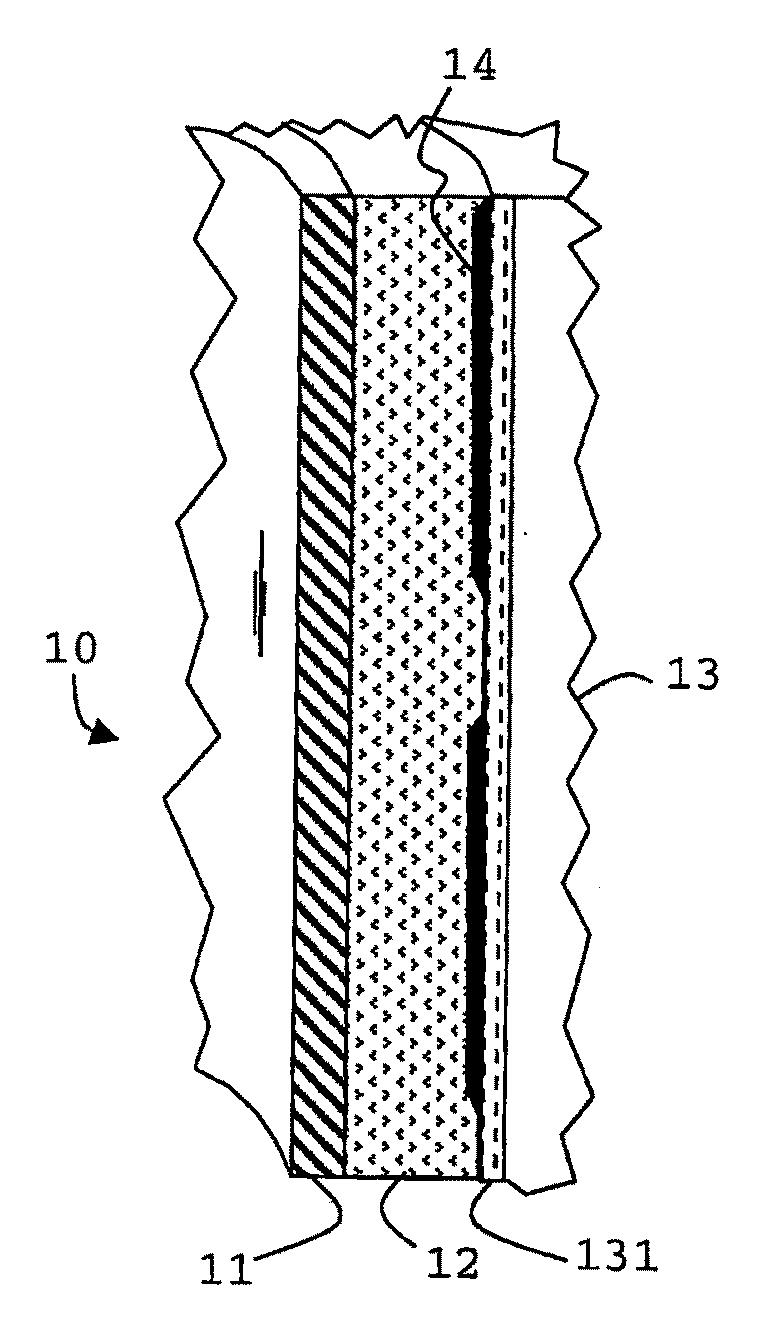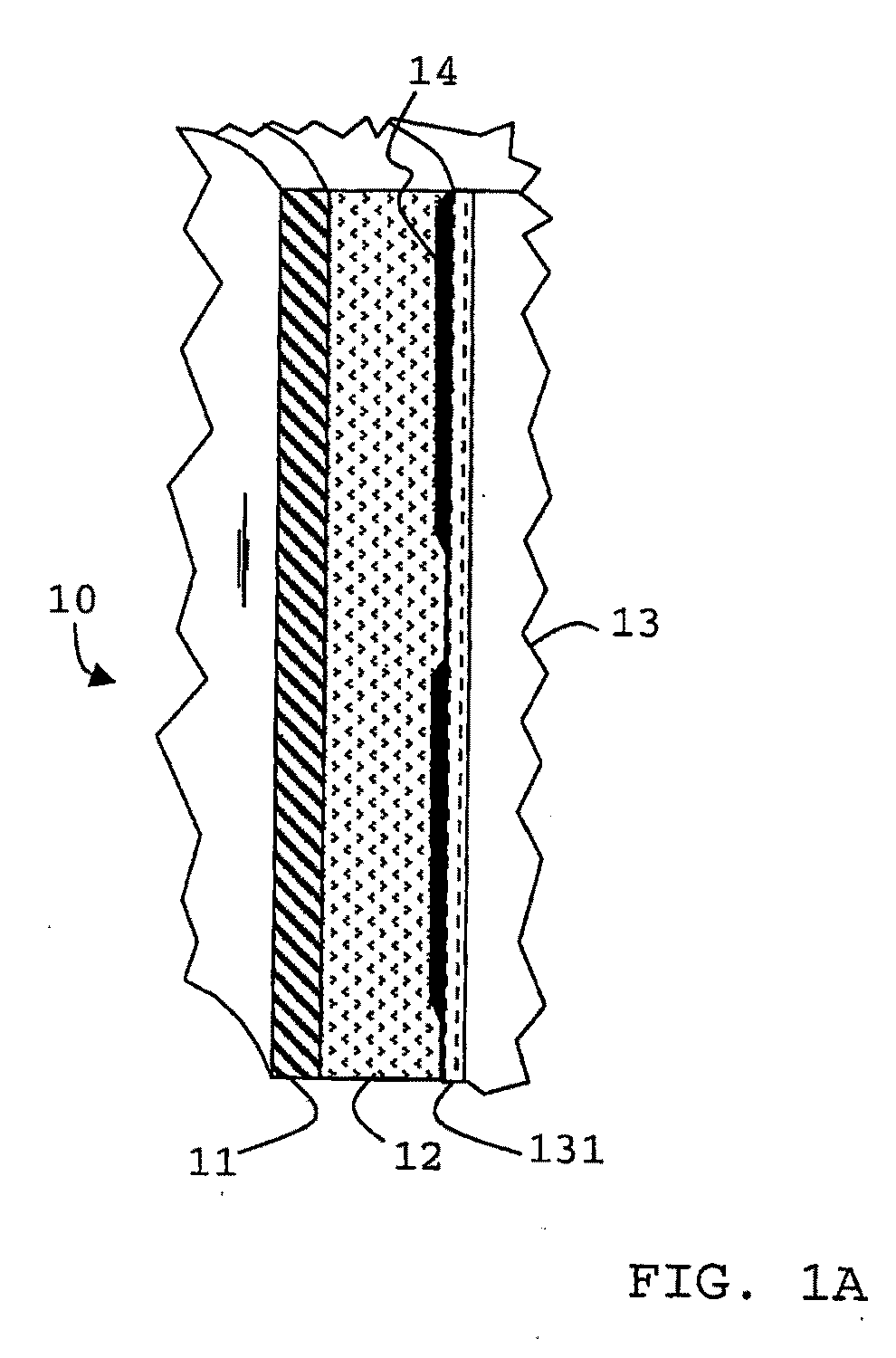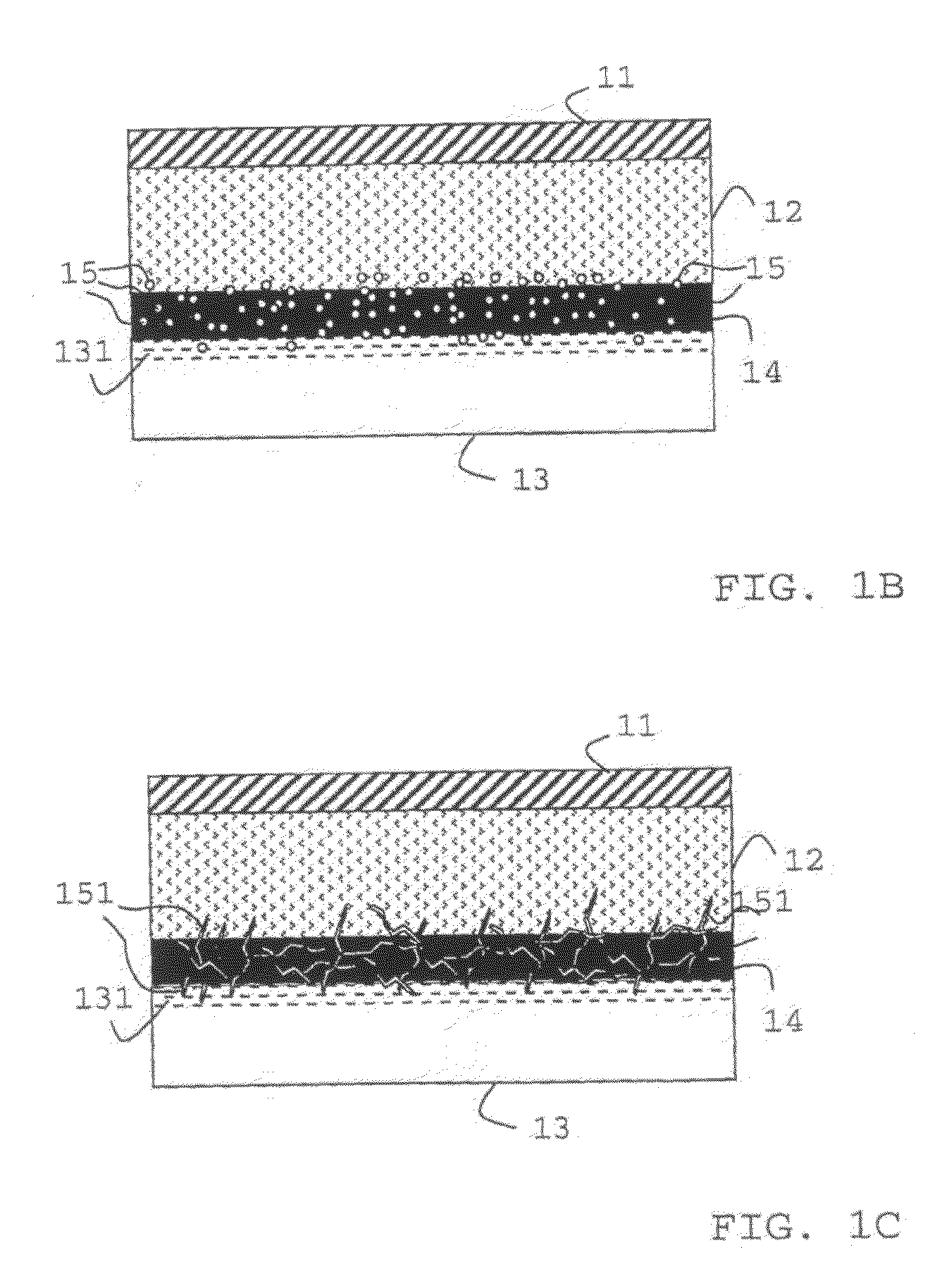Methods and materials for zonal isolation
a technology of materials and zones, applied in the direction of sealing/packing, chemistry apparatus and processes, borehole/well accessories, etc., to achieve the effect of improving zonal isolation and alleviating cracks
- Summary
- Abstract
- Description
- Claims
- Application Information
AI Technical Summary
Benefits of technology
Problems solved by technology
Method used
Image
Examples
examples
Drilling Fluid Formulation Per Barrel (Metric Units)
[0087]0.59 barrel (94 l) Water
3.0 lbs (1.36 kg) Emulsifier (monooleate ester of polyethylene glycol MW 600)
0.32 barrel (51 l) Reactive liquid (1,2 polybutadiene oligomer (B1000 of Nippon Soda Co., MW 1160)
0.6 lbs (0.273 kg) Xanthan gum
[0088]2.0 lbs (0.91 kg) Fluid loss control agent (Drispac® Superlo a polyanionic cellulose by Drilling Specialities Inc)
100 lbs (45.5 kg) Barite
[0089]pH adjusted to pH 9 with NaOH.
Cement Formulation Per Barrel [Alternatively Per 600 ml]
4.6sk[802 g] Cement Dyckerhoff Class G4.3gal / sk[269 g] Water0.9gal / sk [54 g] PBD0.4%BWOC [3 g] TWEEN800.4%BWOC [3 g] potassium persulfate0.06gal / sk [5 g] Dispersant
PUM
| Property | Measurement | Unit |
|---|---|---|
| melting point | aaaaa | aaaaa |
| melting point | aaaaa | aaaaa |
| Hydrophile Lipophile Balance | aaaaa | aaaaa |
Abstract
Description
Claims
Application Information
 Login to View More
Login to View More - R&D
- Intellectual Property
- Life Sciences
- Materials
- Tech Scout
- Unparalleled Data Quality
- Higher Quality Content
- 60% Fewer Hallucinations
Browse by: Latest US Patents, China's latest patents, Technical Efficacy Thesaurus, Application Domain, Technology Topic, Popular Technical Reports.
© 2025 PatSnap. All rights reserved.Legal|Privacy policy|Modern Slavery Act Transparency Statement|Sitemap|About US| Contact US: help@patsnap.com



